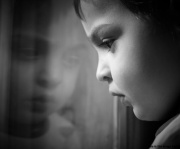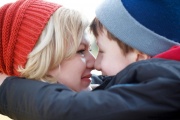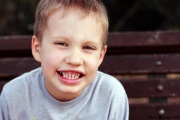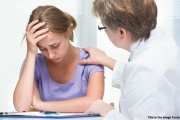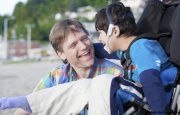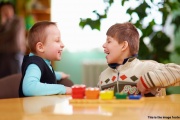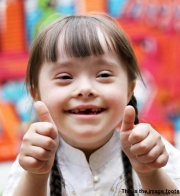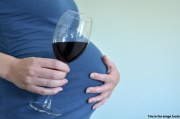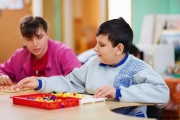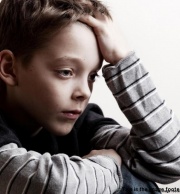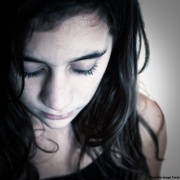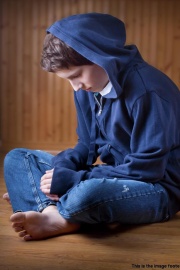Difference between revisions of "Special Needs"
(→Reactive Attachment Disorder (or RAD):) |
|||
| (29 intermediate revisions by the same user not shown) | |||
| Line 1: | Line 1: | ||
| − | ==[[ | + | =Special Needs Adoption= |
| − | + | ==[[What Does Special Needs Adoption Mean?]]== | |
| + | *Definitions | ||
| + | *Eligibility | ||
| + | *Making the decision | ||
| + | *Getting started | ||
| + | *Financial and health-care assistance | ||
| + | *Postadoption services | ||
| − | = | + | =Common Mental, Physical, Emotional Disabilities= |
| − | + | ||
| − | ==[[ | + | ==[[Abuse and Neglect: How is Abuse and Neglect Defined by Law?|Abuse and Neglect]]== |
| − | + | [[File:Shutterstock 162936218.jpg|thumb|left|120px]] | |
| + | '''What is Child [[Abuse]] and [[Neglect]]''' | ||
| + | #[[Abuse and Neglect: How is Abuse and Neglect Defined by Law?|How is Abuse and Neglect Defined by Law?]] | ||
| + | #[[Abuse and Neglect: Recognizing the Signs of Abuse and Neglect|Recognizing the Signs of Abuse and Neglect]] | ||
| + | #[[Abuse and Neglect: The Impact of Childhood Trauma on Wellbeing|The Impact of Childhood Trauma on Wellbeing]] | ||
| + | '''Understanding the Effects of [[Maltreatment]] on Brain Development''' | ||
| + | #[[Abuse and Neglect: How the Brain Develops|How the Brain Develops]] | ||
| + | #[[Abuse and Neglect: Effects of Maltreatment on Brain Development|Effects of Maltreatment on Brain Development]] | ||
| + | #[[Abuse and Neglect: Implications for Practice and Policy|Implications for Practice and Policy]] | ||
| + | #[[Abuse and Neglect: Effects of Maltreatment on Brain Development Summary and Resources|Effects of Maltreatment on Brain Development Summary and Resources]] | ||
| + | '''Long-Term Consequences of Child [[Abuse]] and [[Neglect]]''' | ||
| + | [[File:Long-Term-Consequences-of-Child-Abuse-and-Neglect.jpg|thumb|left|180px]] | ||
| + | #[[Abuse and Neglect: Factors Affecting the Consequences of Child Abuse and Neglect| Factors Affecting the Consequences of Child Abuse and Neglect]] | ||
| + | #[[Abuse and Neglect: Psychological Consequences| Psychological Consequences]] | ||
| + | #[[Abuse and Neglect: Behavioral Consequences| Behavioral Consequences]] | ||
| + | #[[Abuse and Neglect: Societal Consequences| Societal Consequences]] | ||
| + | #[[Abuse and Neglect: Summary and Resources| Summary and Resources]] | ||
| + | '''Preventing Child [[Abuse]] and [[Neglect]]''' | ||
| + | #[[Abuse and Neglect: Prevention Strategies and Protective Factors|Prevention Strategies and Protective Factors]] | ||
| + | '''Child [[Maltreatment]]: Past, Present, Future''' | ||
| + | #[[Abuse and Neglect: Scope of the Problem|Scope of the Problem]] | ||
| + | #[[Abuse and Neglect: Promising Prevention Strategies|Promising Prevention Strategies]] | ||
| + | #[[Abuse and Neglect: Looking Toward the Future|Looking Toward the Future]] | ||
| + | #[[Abuse and Neglect: Conclusion and References| Conclusion and References]] | ||
| − | ==[[Attachment_(Glossary)|Attachment]]:== | + | ==[[Attention Deficit Hyper Activity Disorder|Attention Deficit Disorder or Attention Deficit Activity Disorder]] (or "[[ADHD|ADD or ADHD]]"):== |
| − | + | [[File:Attention-Deficit-Activity-Disorder.jpeg|thumb|left|180px]] | |
| + | *What is [[ADHD]] ([[ADD]]) | ||
| + | *What are the Symptoms of [[ADHD]] | ||
| + | *Does My Child Have [[ADHD]] | ||
| + | *What Can I Do if I Think My Child Has [[ADHD]] | ||
| + | This term describes a lifelong [[Developmental Disability|developmental disability]] that can first be detected in infancy, early childhood or even in [[adolescence]], and which involves challenges with attention span, impulse control, and the intensity level of activities at school, home or at work. For more information, see [[Attention Deficit Hyper Activity Disorder]] page. | ||
| + | |||
| + | ==[[Attachment_(Glossary)|Attachment]]:== | ||
| + | [[File:Building-Attachment.jpeg|thumb|left|180px]] | ||
| + | 1. [[Attachment_(Glossary)|Building attachment with an adopted child]] | ||
| + | |||
| + | 2. [[Attachment: What Works]] | ||
| + | |||
| + | This process begins in early infancy as the child bonds with one or more primary caregivers. Severe cases can fit within the definition of a more permanent condition known as "[[Reactive Attachment Disorder|reactive attachment disorder]].” For more information, see [[Attachment_(Glossary)|Attachment]] page. | ||
==[[Autism]]:== | ==[[Autism]]:== | ||
| − | [[Autism]] is a developmental brain disorder with physical and behavioral components. It affects the brain areas controlling language, social interaction, and abstract thought. Symptoms | + | [[File:Autism.jpg|thumb|left|180px]] |
| − | + | *What is [[Autism]] Spectrum Disorder | |
| + | *What are Some Signs of ASD | ||
| + | *What Can I Do if I Think My Child Has ASD | ||
| + | |||
| + | [[Autism]] is a developmental brain disorder with physical and behavioral components. It affects the brain areas controlling language, social interaction, and abstract thought. For more information, see [[Autism]] page. | ||
| + | |||
| + | ==[[Bipolar Disorder]]:== | ||
| + | [[File:Bipolar-Disorder.jpg|thumb|left|180px]] | ||
| + | 1. [[Bipolar Disorder: What is Bipolar Disorder|What is Bipolar Disorder]] | ||
| + | |||
| + | 2. [[Bipolar Disorder: Causes|Causes]] | ||
| + | |||
| + | 3. [[Bipolar Disorder: Signs and Symptoms|Signs and Symptoms]] | ||
| + | |||
| + | 4. [[Bipolar Disorder: Who is at Risk?|Who is at Risk?]] | ||
| + | |||
| + | 5. [[Bipolar Disorder: Diagnosis|Diagnosis]] | ||
| + | |||
| + | 6. [[Bipolar Disorder: Treatments|Treatments]] | ||
| + | |||
| + | 7. [[Bipolar Disorder: Living With|Living With]] | ||
| + | |||
| + | 8. [[Bipolar Disorder: Clinical Trials|Clinical Trials]] | ||
| + | |||
| + | This term is used to describe a form of mental illnesses in which moods and reactions are affect, and which is characterized by irregular cycles of mania and/or depression. For more information, start with the [[What is Bipolar Disorder]] page. | ||
| + | |||
| + | ==[[Central Auditory Processing Disorder]] ([[CAPD]]):== | ||
| + | |||
| + | This term describes a condition in which the affected individual, whose hearing capabilities are otherwise functionally sound, will have difficulty understanding and processing information that is heard. For more information, see [[Central Auditory Processing Disorder]] page. | ||
| + | |||
| + | ==[[Cerebral Palsy]] (CP):== | ||
| + | [[File:Cerebral-Palsy-CP.jpg|thumb|left|180px]] | ||
| + | *What is [[Cerebral Palsy]] | ||
| + | *What are Common Signs | ||
| + | *What are Some Causes | ||
| + | |||
| + | This a very broad umbrella term that is used to describe a group of chronic, non-hereditary condition of varying severity that are believed to be the result of faulty development of, or damage to, the motor areas in the brain, which then causes a [[disruption]] in the brain's ability to control muscular movement and posture. For more information, see [[Cerebral Palsy]] page. | ||
| + | |||
| + | ==[[Developmental Disability]]:== | ||
| + | [[File:Developmental-Disability.jpg|thumb|left|180px]] | ||
| + | *Facts | ||
| + | *Developmental Milestones | ||
| + | *Concerns | ||
| + | *Monitoring and Screening for Disability | ||
| + | *Causes and Risk Factors | ||
| + | *Who is Affected | ||
| + | *Living With a [[Developmental Disability]] | ||
| + | |||
| + | This term refers to a severe and chronic impairment, which can be attributed to one or more mental or physical impairments which will require specific and lifelong or extended care that is individually planned and coordinated, and which had an onset before age 22, and which is likely to continue indefinitely. For more information, see [[Developmental Disability]] page. | ||
| + | |||
| + | ==[[Down Syndrome]]:== | ||
| + | [[File:Down-Syndrome.jpg|thumb|left|180px]] | ||
| + | *What is [[Down Syndrome]] | ||
| + | *Types of [[Down Syndrome]] | ||
| + | *Causes and Risk Factors | ||
| + | *Diagnosis | ||
| + | *Other Health Problems | ||
| + | *Living With [[Down Syndrome]] | ||
| + | |||
| + | A genetic disorder that is caused by the presence of an extra chromosome, which results in varying degrees of physical and mental abnormality. For more information, see [[Down Syndrome]] page. | ||
| + | |||
| + | ==[[Fetal Alcohol Spectrum Disorders]]:== | ||
| + | [[File:Fetal-Alcohol-Spectrum-Disorders.jpg|thumb|left|180px]] | ||
| + | *What are [[Fetal Alcohol Spectrum Disorders]] | ||
| + | *Treatments | ||
| + | *Early Intervention Services | ||
| + | *Protective Factors | ||
| + | *Types of Treatments | ||
| + | This term refers to certain birth defects, and serious, life-long mental and emotional impairments that may be suffered by a child as the result of heavy alcohol consumption by its mother during [[pregnancy]]. For more information, see [[Fetal Alcohol Spectrum Disorders]] page. | ||
| + | |||
| + | ==[[Learning Disabilities: What are Learning Disabilities?|Learning Disabilities]] (LD):== | ||
| + | [[File:Learning-Disabilities-LD.jpg|thumb|left|180px]] | ||
| + | 1. [[Learning Disabilities: What are Learning Disabilities?|What are Learning Disabilities?]] | ||
| + | |||
| + | 2. [[Learning Disabilities: Causes|Causes]] | ||
| + | |||
| + | 3. [[Learning Disabilities: Symptoms|Symptoms]] | ||
| + | |||
| + | 4. [[Learning Disabilities: Who's at Risk?|Who's at Risk?]] | ||
| + | |||
| + | 5. [[Learning Disabilities: Diagnosis|Diagnosis]] | ||
| + | |||
| + | 6. [[Learning Disabilities: Treatments|Treatments]] | ||
| + | |||
| + | 7. [[Learning Disabilities: Is There a Cure?|Is There a Cure?]] | ||
| + | |||
| + | 8. [[Learning Disabilities: Other Facts|Other Facts]] | ||
| + | |||
| + | One or more impairments that a child may have in such areas as reading, mathematics and/or written expression skills, which interfere with the expected academic performance of the child in school, or in other daily activities that require those skills. For more information, see the [[Learning Disabilities: What are Learning Disabilities?]] page. | ||
| + | |||
| + | ==[[Mental Retardation| Mental Retardation or Intellectual Disability]]:== | ||
| + | *What is intellectual disability? | ||
| + | *What are some signs of intellectual disability? | ||
| + | *What can I do if I think my child may have intellectual disability? | ||
| + | |||
| + | Impaired or incomplete mental development characterized by an IQ of 70 or below and characterized by significant functional limitations in at least two of the following skills: communication, self-care, home living, social/interpersonal skills, use of community resources, self-direction, functional academic skills, work, leisure, health, and safety. For more information, see [[Mental Retardation]] page. | ||
| + | |||
| + | ==[[Post-Traumatic Stress Disorder]]:== | ||
| + | [[File:Post-Traumatic-Stress-Disorder.jpg|thumb|left|180px]] | ||
| + | 1. [[Post-Traumatic Stress Disorder: What is Post-Traumatic Stress Disorder|What is Post-Traumatic Stress Disorder]] | ||
| + | |||
| + | 2. [[Post-Traumatic Stress Disorder: Causes|Causes]] | ||
| + | |||
| + | 3. [[Post-Traumatic Stress Disorder: Signs and Symptoms|Signs and Symptoms]] | ||
| + | |||
| + | 4. [[Post-Traumatic Stress Disorder: Who is at Risk?|Who is at Risk?]] | ||
| + | |||
| + | 5. [[Post-Traumatic Stress Disorder: Diagnosis|Diagnosis]] | ||
| + | |||
| + | 6. [[Post-Traumatic Stress Disorder: Treatments|Treatments]] | ||
| + | |||
| + | 7. [[Post-Traumatic Stress Disorder: Living With|Living With]] | ||
| + | |||
| + | 8. [[Post-Traumatic Stress Disorder: Clinical Trials|Clinical Trials]] | ||
| − | + | A condition in which victims of overwhelming and uncontrollable experiences are subsequently psychologically affected by feelings of intense fear, [[loss]] of safety, [[loss]] of control, helplessness, and extreme vulnerability and in children the disorder involves disorganized or agitated behavior. For more information, see [[Post-Traumatic Stress Disorder]] page. | |
| − | + | ||
| − | ==[[ | + | ==[[Reactive Attachment Disorder]] (or [[RAD]]):== |
| − | + | [[File:Reactive-Attachment-Disorder-RAD.jpeg|thumb|left|180px]] | |
| + | *Signs of [[RAD]] | ||
| + | *Services that may be beneficial | ||
| − | + | This term is used to describe a condition that generally appears in children before age five, and is thought to result from a lack of consistent care and nurturing in early years. For more information, see [[Reactive Attachment Disorder]] page. | |
| − | This | + | <br/><br/><br/><br/> |
| − | ==[[ | + | ==[[Sexual Abuse: Educating Yourself|Sexual Abuse]]:== |
| − | + | [[File:Sexual-Abuse.jpg|thumb|left|180px]] | |
| + | '''Parenting a Child Who Has Been Sexually Abused''' | ||
| − | + | 1. [[Sexual Abuse: Educating Yourself|Educating Yourself]] | |
| − | + | ||
| − | + | 2. [[Sexual Abuse: Establishing Family Guidelines for Safety and Privacy|Establishing Family Guidelines for Safety and Privacy]] | |
| − | + | ||
| − | + | ||
| − | + | ||
| − | + | ||
| − | + | 3. [[Sexual Abuse: Seeking Help|Seeking Help]] | |
| − | + | ||
| − | + | Indicators and behaviors which suggest that a child may have been sexually abused, including: excessive masturbation, sexual interaction with peers, sexual aggression towards younger and more naive children, seductive behavior, and promiscuity. For more information, see [[Sexual Abuse: Educating Yourself|Sexual Abuse]] page. | |
| − | + | <br/> | |
| − | ==[[ | + | ==Social Disorders== |
| − | + | [[File:Social-Disorders.jpg|thumb|left|180px]] | |
| + | *[[Anti-Social Behavior]] | ||
| + | *[[Conduct Disorder]] | ||
| + | *[[Emotional Disturbance]] | ||
| + | *[[Oppositional Defiant Disorder]] | ||
| + | <br/><br/> | ||
| − | ==[[ | + | ==[[Speech and Language Disorders]]:== |
| − | + | [[File:Speech-and-Language-Disorders.jpg|thumb|left|180px]] | |
| + | *How Do Speech and Language Develop | ||
| + | *What Are the Milestones for Speech and Language Development | ||
| + | *What is the Difference Between a Speech and Language Disorder | ||
| + | *What Should I Do if My Child’s Speech or Language Appears to be Delayed | ||
| + | *What [[Research]] is Being Conducted | ||
| + | *What Are Voice, Speech, and Language | ||
| + | *Your Child’s Hearing and Communicative Development Checklist | ||
| − | + | Impairments of speech or receptive language. For more information, see [[Speech and Language Disorders]] page. | |
| − | + | ||
| − | ==[[ | + | ==[[Tourette’s Syndrome: What is Tourette’s Syndrome?|Tourette's Syndrome]]:== |
| − | + | [[File:Tourettes-Syndrome.jpg|thumb|left|180px]] | |
| + | 1. [[Tourette’s Syndrome: What is Tourette’s Syndrome?|What is Tourette’s Syndrome?]] | ||
| − | + | 2. [[Tourette’s Syndrome: Diagnosis|Diagnosis]] | |
| − | + | ||
| − | + | 3. [[Tourette’s Syndrome: Treatments|Treatments]] | |
| − | + | ||
| − | + | 4. [[Tourette’s Syndrome: Other Concerns and Conditions|Other Concerns and Conditions]] | |
| − | + | ||
| − | + | 5. [[Tourette’s Syndrome: Risk Factors and Causes|Risk Factors and Causes]] | |
| − | + | ||
| − | + | A treatable neurological disorder that consists of involuntary "tic" movements or vocalizations that become more apparent under stress. For more information, see [[Tourette’s Syndrome: What is Tourette’s Syndrome?|What is Tourette’s Syndrome?]] page. | |
| − | A treatable neurological disorder that consists of involuntary "tic" movements or vocalizations that become more apparent under stress. | + | |
Return to [[Adoption Wiki]] | Return to [[Adoption Wiki]] | ||
Latest revision as of 11:33, 22 January 2015
Contents
- 1 Special Needs Adoption
- 2 Common Mental, Physical, Emotional Disabilities
- 2.1 Abuse and Neglect
- 2.2 Attention Deficit Disorder or Attention Deficit Activity Disorder (or "ADD or ADHD"):
- 2.3 Attachment:
- 2.4 Autism:
- 2.5 Bipolar Disorder:
- 2.6 Central Auditory Processing Disorder (CAPD):
- 2.7 Cerebral Palsy (CP):
- 2.8 Developmental Disability:
- 2.9 Down Syndrome:
- 2.10 Fetal Alcohol Spectrum Disorders:
- 2.11 Learning Disabilities (LD):
- 2.12 Mental Retardation or Intellectual Disability:
- 2.13 Post-Traumatic Stress Disorder:
- 2.14 Reactive Attachment Disorder (or RAD):
- 2.15 Sexual Abuse:
- 2.16 Social Disorders
- 2.17 Speech and Language Disorders:
- 2.18 Tourette's Syndrome:
Special Needs Adoption
What Does Special Needs Adoption Mean?
- Definitions
- Eligibility
- Making the decision
- Getting started
- Financial and health-care assistance
- Postadoption services
Common Mental, Physical, Emotional Disabilities
Abuse and Neglect
What is Child Abuse and Neglect
- How is Abuse and Neglect Defined by Law?
- Recognizing the Signs of Abuse and Neglect
- The Impact of Childhood Trauma on Wellbeing
Understanding the Effects of Maltreatment on Brain Development
- How the Brain Develops
- Effects of Maltreatment on Brain Development
- Implications for Practice and Policy
- Effects of Maltreatment on Brain Development Summary and Resources
Long-Term Consequences of Child Abuse and Neglect
- Factors Affecting the Consequences of Child Abuse and Neglect
- Psychological Consequences
- Behavioral Consequences
- Societal Consequences
- Summary and Resources
Preventing Child Abuse and Neglect
Child Maltreatment: Past, Present, Future
- Scope of the Problem
- Promising Prevention Strategies
- Looking Toward the Future
- Conclusion and References
Attention Deficit Disorder or Attention Deficit Activity Disorder (or "ADD or ADHD"):
- What is ADHD (ADD)
- What are the Symptoms of ADHD
- Does My Child Have ADHD
- What Can I Do if I Think My Child Has ADHD
This term describes a lifelong developmental disability that can first be detected in infancy, early childhood or even in adolescence, and which involves challenges with attention span, impulse control, and the intensity level of activities at school, home or at work. For more information, see Attention Deficit Hyper Activity Disorder page.
Attachment:
1. Building attachment with an adopted child
This process begins in early infancy as the child bonds with one or more primary caregivers. Severe cases can fit within the definition of a more permanent condition known as "reactive attachment disorder.” For more information, see Attachment page.
Autism:
- What is Autism Spectrum Disorder
- What are Some Signs of ASD
- What Can I Do if I Think My Child Has ASD
Autism is a developmental brain disorder with physical and behavioral components. It affects the brain areas controlling language, social interaction, and abstract thought. For more information, see Autism page.
Bipolar Disorder:
2. Causes
5. Diagnosis
6. Treatments
7. Living With
This term is used to describe a form of mental illnesses in which moods and reactions are affect, and which is characterized by irregular cycles of mania and/or depression. For more information, start with the What is Bipolar Disorder page.
Central Auditory Processing Disorder (CAPD):
This term describes a condition in which the affected individual, whose hearing capabilities are otherwise functionally sound, will have difficulty understanding and processing information that is heard. For more information, see Central Auditory Processing Disorder page.
Cerebral Palsy (CP):
- What is Cerebral Palsy
- What are Common Signs
- What are Some Causes
This a very broad umbrella term that is used to describe a group of chronic, non-hereditary condition of varying severity that are believed to be the result of faulty development of, or damage to, the motor areas in the brain, which then causes a disruption in the brain's ability to control muscular movement and posture. For more information, see Cerebral Palsy page.
Developmental Disability:
- Facts
- Developmental Milestones
- Concerns
- Monitoring and Screening for Disability
- Causes and Risk Factors
- Who is Affected
- Living With a Developmental Disability
This term refers to a severe and chronic impairment, which can be attributed to one or more mental or physical impairments which will require specific and lifelong or extended care that is individually planned and coordinated, and which had an onset before age 22, and which is likely to continue indefinitely. For more information, see Developmental Disability page.
Down Syndrome:
- What is Down Syndrome
- Types of Down Syndrome
- Causes and Risk Factors
- Diagnosis
- Other Health Problems
- Living With Down Syndrome
A genetic disorder that is caused by the presence of an extra chromosome, which results in varying degrees of physical and mental abnormality. For more information, see Down Syndrome page.
Fetal Alcohol Spectrum Disorders:
- What are Fetal Alcohol Spectrum Disorders
- Treatments
- Early Intervention Services
- Protective Factors
- Types of Treatments
This term refers to certain birth defects, and serious, life-long mental and emotional impairments that may be suffered by a child as the result of heavy alcohol consumption by its mother during pregnancy. For more information, see Fetal Alcohol Spectrum Disorders page.
Learning Disabilities (LD):
1. What are Learning Disabilities?
2. Causes
3. Symptoms
5. Diagnosis
6. Treatments
8. Other Facts
One or more impairments that a child may have in such areas as reading, mathematics and/or written expression skills, which interfere with the expected academic performance of the child in school, or in other daily activities that require those skills. For more information, see the Learning Disabilities: What are Learning Disabilities? page.
Mental Retardation or Intellectual Disability:
- What is intellectual disability?
- What are some signs of intellectual disability?
- What can I do if I think my child may have intellectual disability?
Impaired or incomplete mental development characterized by an IQ of 70 or below and characterized by significant functional limitations in at least two of the following skills: communication, self-care, home living, social/interpersonal skills, use of community resources, self-direction, functional academic skills, work, leisure, health, and safety. For more information, see Mental Retardation page.
Post-Traumatic Stress Disorder:
1. What is Post-Traumatic Stress Disorder
2. Causes
5. Diagnosis
6. Treatments
7. Living With
A condition in which victims of overwhelming and uncontrollable experiences are subsequently psychologically affected by feelings of intense fear, loss of safety, loss of control, helplessness, and extreme vulnerability and in children the disorder involves disorganized or agitated behavior. For more information, see Post-Traumatic Stress Disorder page.
Reactive Attachment Disorder (or RAD):
- Signs of RAD
- Services that may be beneficial
This term is used to describe a condition that generally appears in children before age five, and is thought to result from a lack of consistent care and nurturing in early years. For more information, see Reactive Attachment Disorder page.
Sexual Abuse:
Parenting a Child Who Has Been Sexually Abused
2. Establishing Family Guidelines for Safety and Privacy
3. Seeking Help
Indicators and behaviors which suggest that a child may have been sexually abused, including: excessive masturbation, sexual interaction with peers, sexual aggression towards younger and more naive children, seductive behavior, and promiscuity. For more information, see Sexual Abuse page.
Social Disorders
Speech and Language Disorders:
- How Do Speech and Language Develop
- What Are the Milestones for Speech and Language Development
- What is the Difference Between a Speech and Language Disorder
- What Should I Do if My Child’s Speech or Language Appears to be Delayed
- What Research is Being Conducted
- What Are Voice, Speech, and Language
- Your Child’s Hearing and Communicative Development Checklist
Impairments of speech or receptive language. For more information, see Speech and Language Disorders page.
Tourette's Syndrome:
1. What is Tourette’s Syndrome?
2. Diagnosis
3. Treatments
4. Other Concerns and Conditions
A treatable neurological disorder that consists of involuntary "tic" movements or vocalizations that become more apparent under stress. For more information, see What is Tourette’s Syndrome? page.
Return to Adoption Wiki

